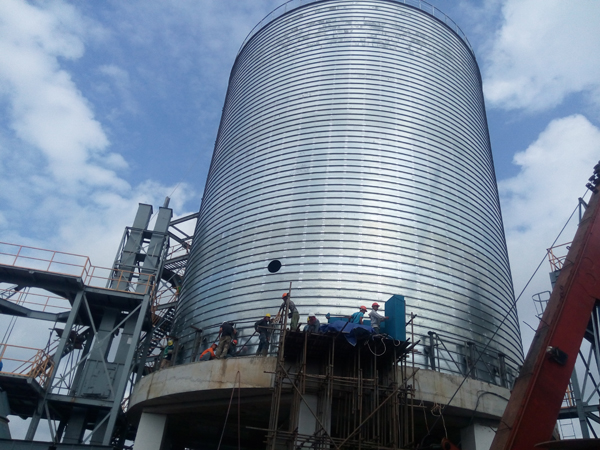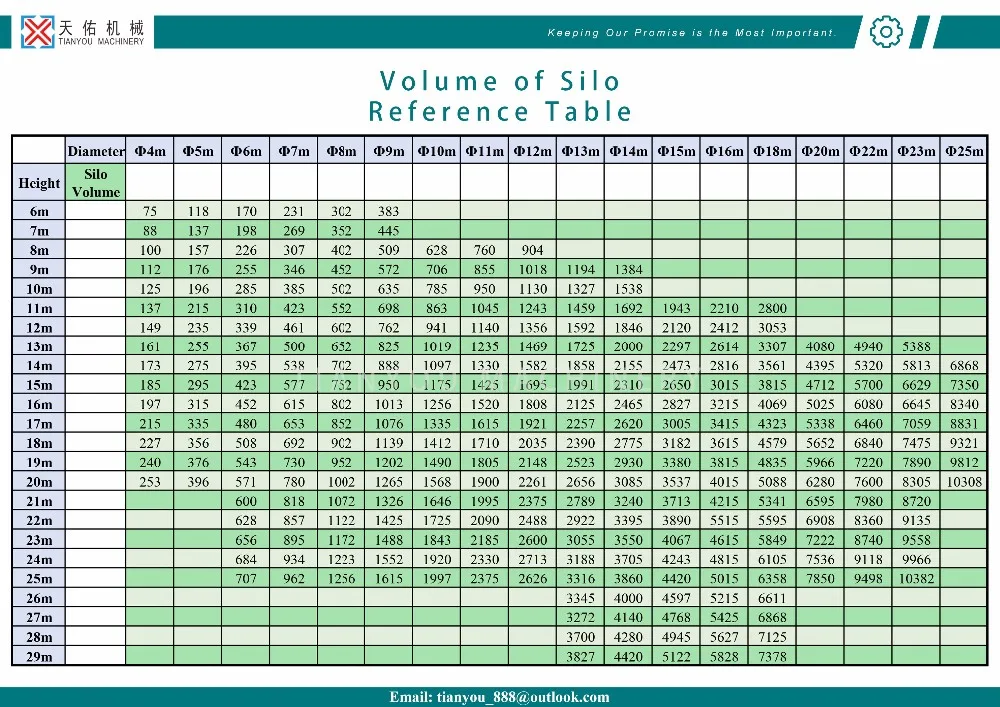
Research has shown increases in starch digestibility in corn silage stored for 240 days after harvest. Some may want to plan for additional storage so that corn silage can ferment for a longer time to increase starch digestibility by dairy cattle. Provisions should be made to have extra silage in storage elsewhere to feed while the new crop is fermenting for a minimum of 3 weeks. It is always best to have too narrow of a silo than too wide. Oversizing silage storage can result in major feed shrink. This is one of the most important and often forgotten calculations when sizing these structures.The height of a structure should always be limited by the safe vertical reach of silage removal equipment.When sizing the width of bunkers, trenches, and piles, they should be at a minimum of 2 times the width of the packing tractor and the maximum width determined by the amount of silage that needs to be removed daily to maintain a “fresh” silo face.For example, if a 500 milking cow herd is fed 20 lbs/day (9 kg/day) of DM from silage per cow (60 lb/day (27 kg/day) as-fed at 33% DM), the maximum width should be 156 feet (47 m) or 78 feet (24 m) if half of the silage DM was corn silage and the remaining half another type of silage.(These calculations assume 10% storage losses, 5% feeding losses, 8 foot side walls, and daily remove 8 inches of silage face.) To calculate your own silo dimensions, see “Bunker Silo Sizing Spreadsheet” developed by Dr. Sizing bunkers and pilesīunkers, trenches, and piles need to be sized such that a minimum of 8 to 12 inches (20-30 cm) is removed daily from the silo face. The following key areas should be reviewed to see whether bunker or drive-over pile management can be improved to reduce feed shrink and improve forage quality at feedout. To make the best use of forage resources, proper management of forages during storage and at feedout is critical. These losses are substantial and the extent of losses may not be realized unless the difference between the amount of silage entering and fed out of a structure is measured. This amount of silage is equal to the amount needed to feed approximately 10 lactating cows for a year or $2250 worth of silage (silage valued at $45/ton). For a 30 ft (9 m) by 100 ft (30 m) bunker, approximately 50 tons (45 metric tons) of corn silage would be lost. A study with uncovered bunker silos showed a 75% loss of DM of corn silage within the top 10 inches (25 cm) and 25% losses within the next 10 inches of surface area on top of the bunker compared to bunkers properly covered with plastic and tires.

Dry matter (DM) losses can be substantial in bunkers and drive over piles not harvested at the correct moisture, packed adequately, covered with plastic, and weighted down adequately using tires which touch, sandbags or some other weighting system. Management of a bunker silo or drive-over silage pile during harvest, storage and feedout directly impacts the quantity and quality of silage fed to dairy cows.

The silo's are down on the ground however there will be a $5,000.00 crane charge to load on buyers trucks.Slat at another location.Bunker Silo and Drive-Over Silage Pile Management The pads on the silo legs were removed when the system was taken down, the silo cones and barrel walls look to need some repairs. * There is hot oil heat on the sub-floor covered by insulation and metal covers and oil heat on the boot of the silo. * There are stairs (1) one side of the conveyor to make maintenance easier. A 100 hp motor and a REX Neptune gear reducer power the conveyor. * There is a mix reject gate in the floor. * Seventeen floating bearings located at five-foot intervals on the sidewalls to allow the slat to move up and over any floor obstruction to prevent damage to the chains or slats. * There are high and low bindicators for material level indicators.

* Electrically heated cones with electrically heated double gates. * The 6-ton round anti segregation batchers are mounted to the top. * Sixteen gauge galvanized metal wrapper covers the insulation and the 12’ square top is checker plated for antiskid. * Each silo has four inches of insulation on the sidewalls and cone and six inches on the top. * The two (2) Standard Havens silos are a nominal 200 tons each. Complete Asphalt Paving Operations For Sale (3)


 0 kommentar(er)
0 kommentar(er)
